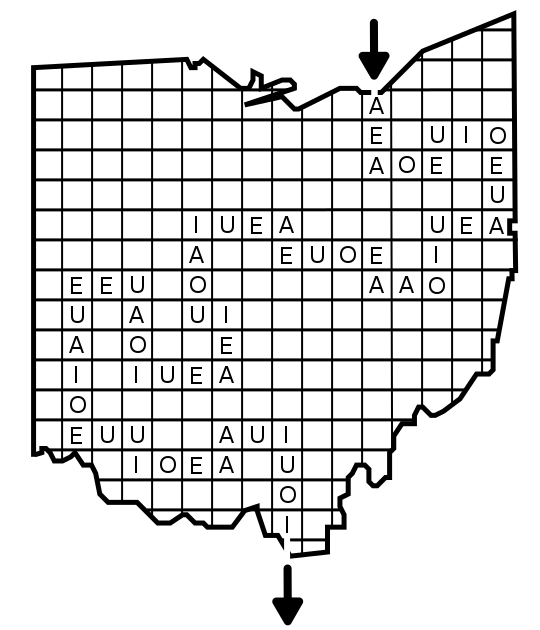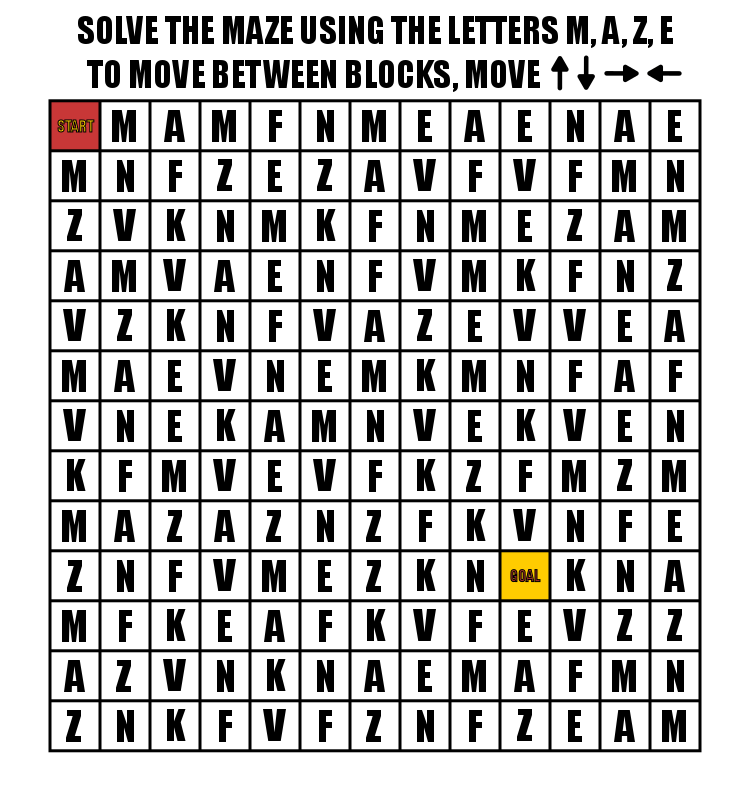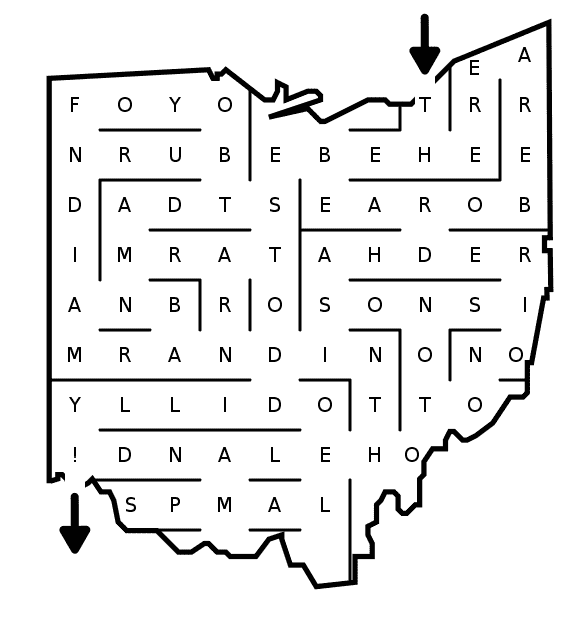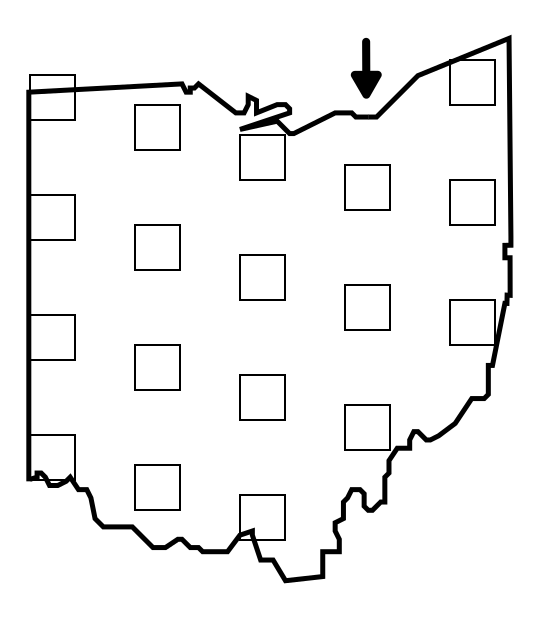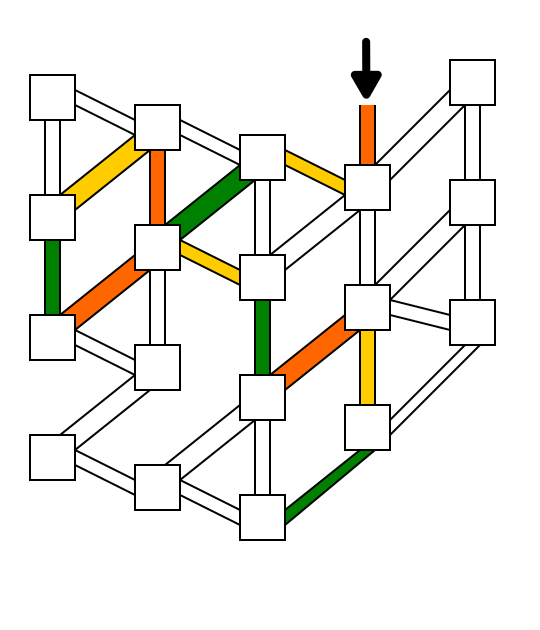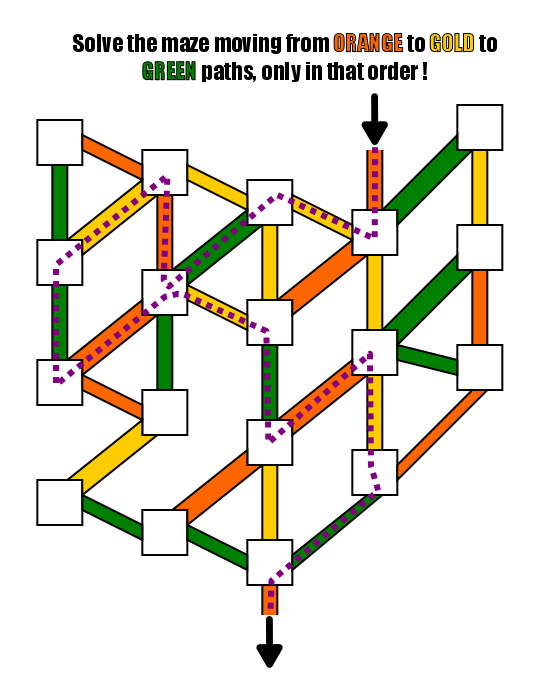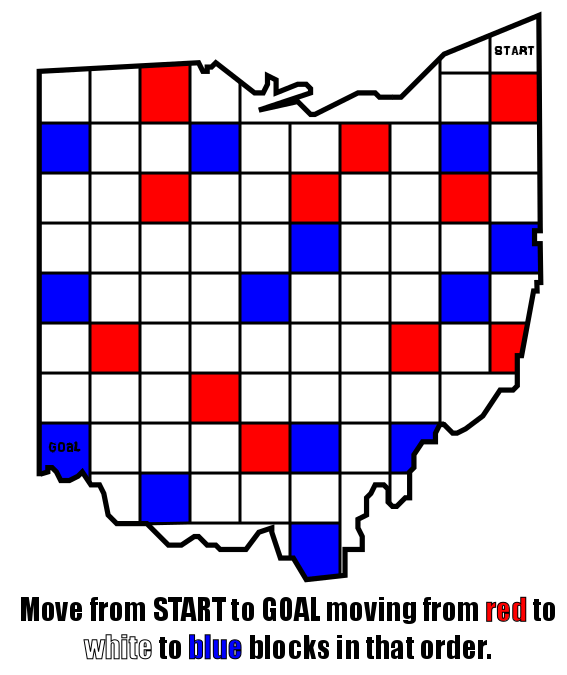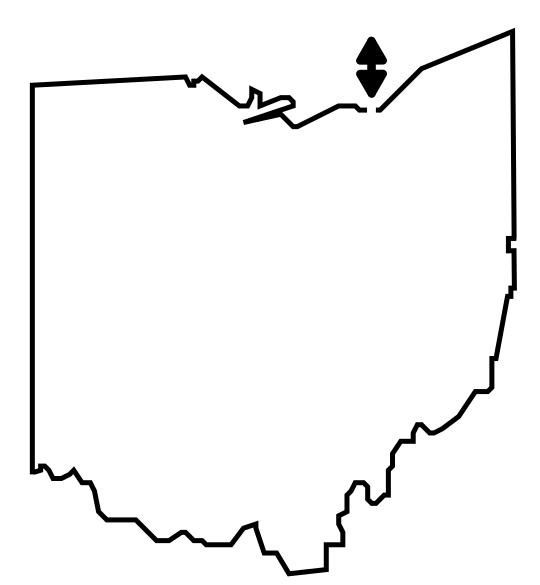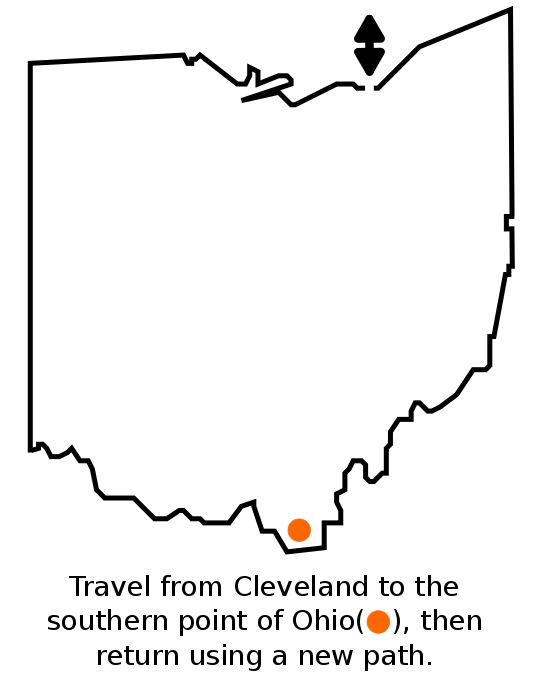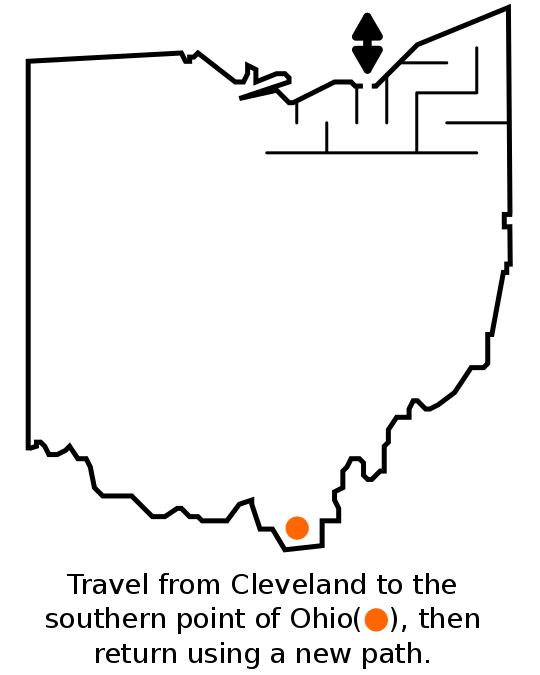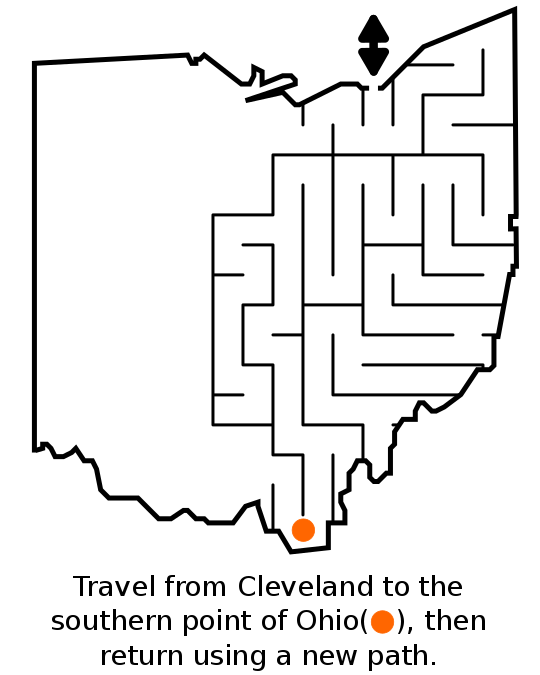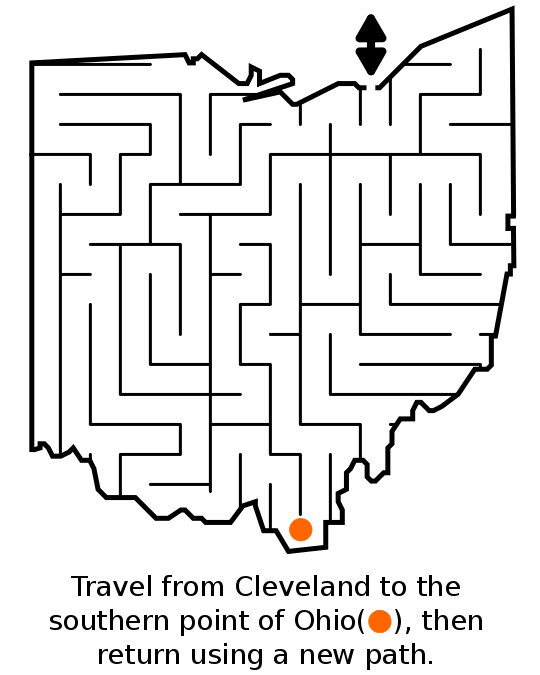In a series of posts I will show you how to make a maze in a wide variety of design constructions. The 36th type of maze construction is the Find Items maze. Let’s define what I mean, then get into the example. Every example will use the sample basic outline (the state of Ohio) to better illustrate the differences between each maze type.
Avoid Items Maze - A maze that requires the solver to avoid specific places within the pathways or avoid items along the way before reaching the goal. This can be considered the opposite of the Find Items Maze.
How to Make a Avoid Items Maze
Step 1 - Draw the Outline
The outline of the maze makes the outer wall of the maze. It can be anything from a simple shape like a square, to a complex picture. The outline should be thicker than the internal lines to give the maze definition. In the example below I chose the state of Ohio.
Step 1.5 - Choose the Start and Goal
For the below example I chose the start of Cleveland and the Goal of Cincinnati.
Step 2 - Start to Draw the Maze Walls
Begin drawing maze walls from the entrance to the maze. I used a standard path maze for the example but most constructions of mazes will work for Avoid Item mazes.
Step 3 - Continue Drawing Paths, Adding Avoid items
As you continue to draw paths add the avoid items into paths. Essentially any avoid items work like dead ends, so use them as such as you make your design.
Step 4 - Complete the Maze
Complete the maze, placing avoid items periodically to challenge the solver.
Step 5 - Add Directions for the Solver
This step can be completed at any time. Ask the solver to avoid the items in the maze.
Step 6 (Optional) - Make the Maze Solution
Highlight the correct path in the final version of the maze to create the final Maze solution (shown here in blue).
Additional Avoid Items Maze Examples
Below is another example of the Avoid Items Maze that is more geared towards children. An apple avoids worms to solve this example. Could be used for an ant avoiding anteaters, a taxi avoiding potholes, or similar ideas.
My next example of Avoid items maze involves the dodging of flies to reach the goal successfully.
As I mentioned above the Find Items maze is the sibling of the Avoid Items maze. My third example is a combination of a Find Items maze and an Avoid Items maze geared towards children. A solver must find all the clothing while avoiding all the moths.
Interested in learning how to make or draw other types of digital mazes ? I have step by step instructions on how to make over 40 different maze types.
If you prefer making labyrinths, you can find step by step labyrinth making instructions.













